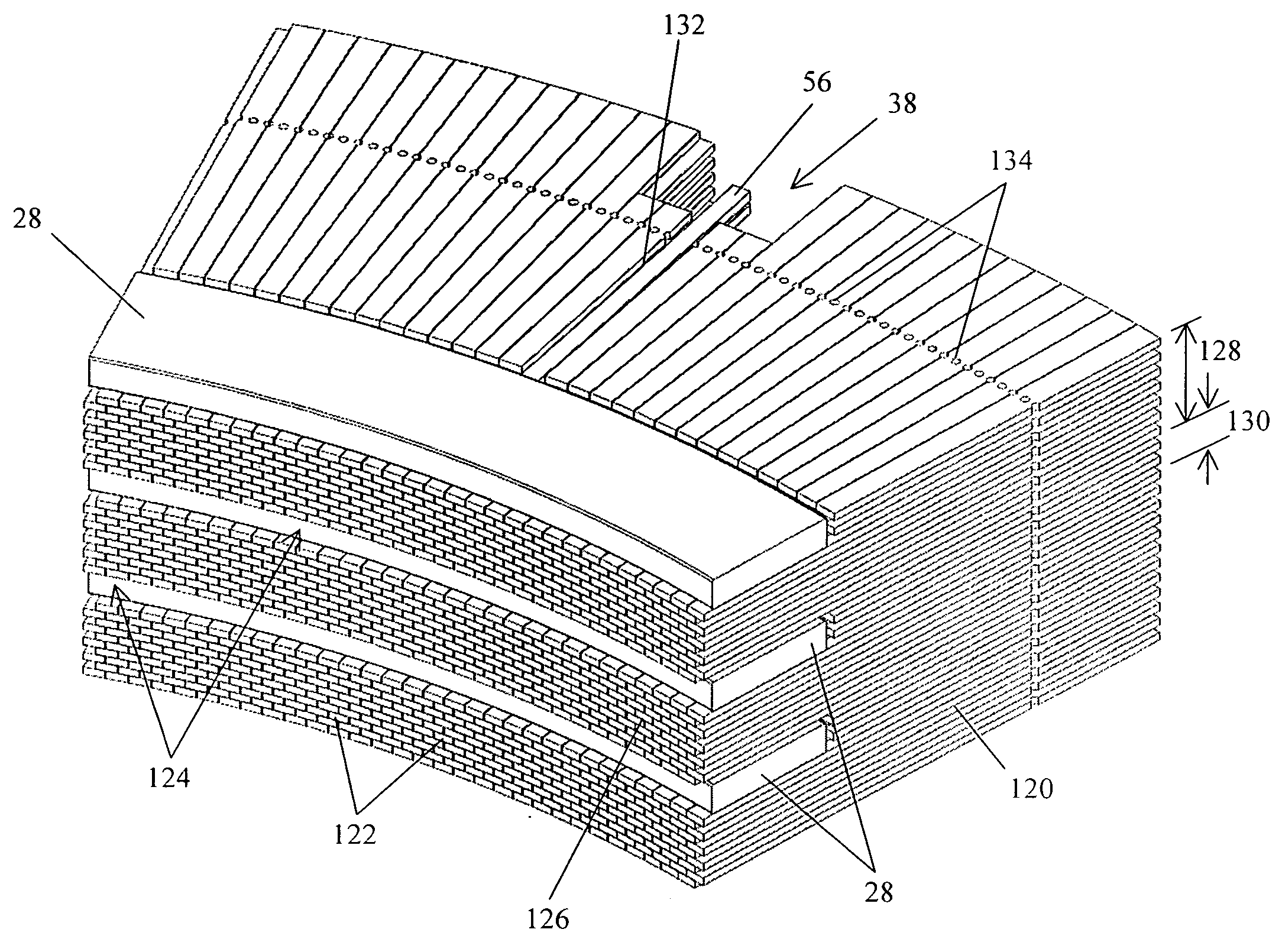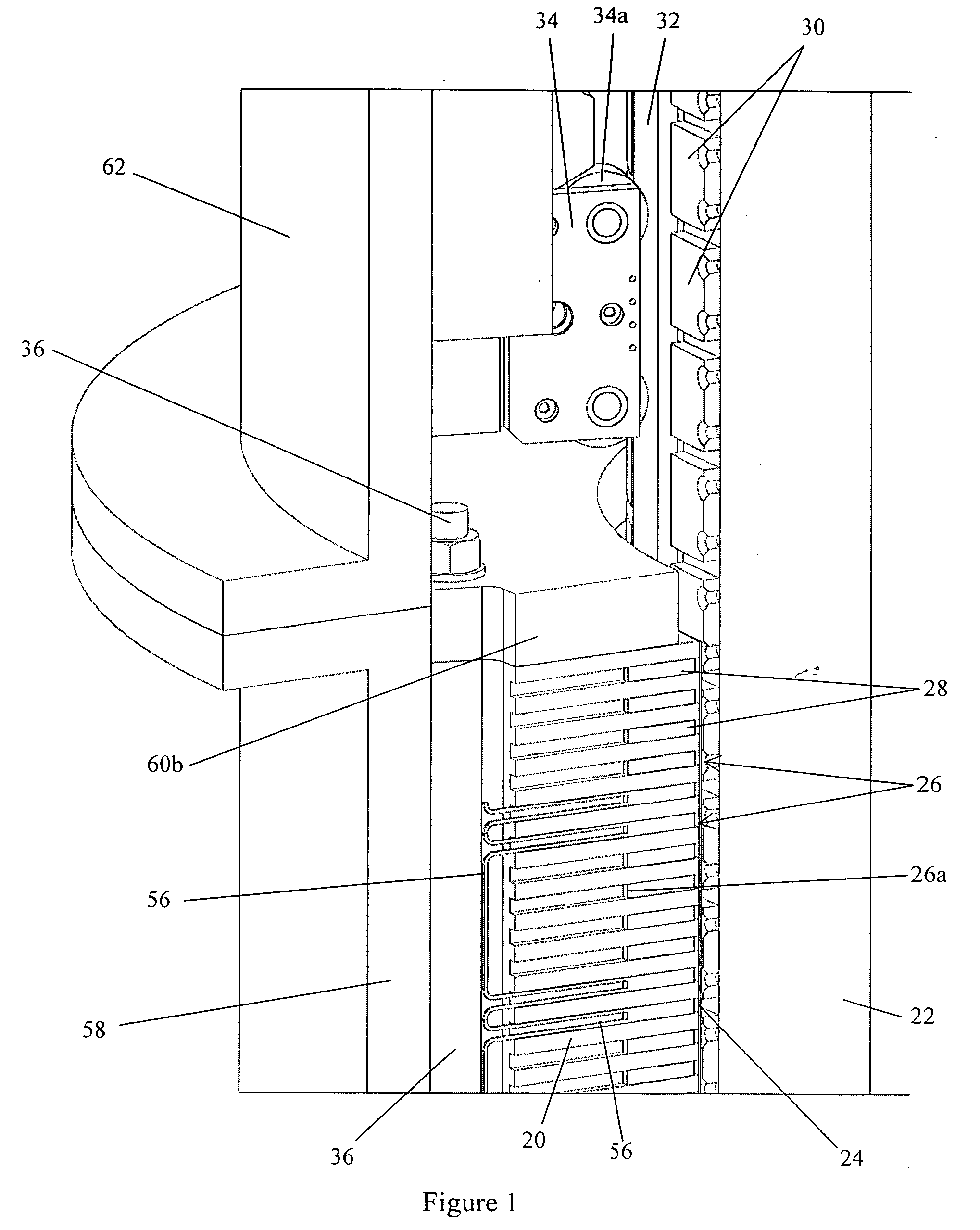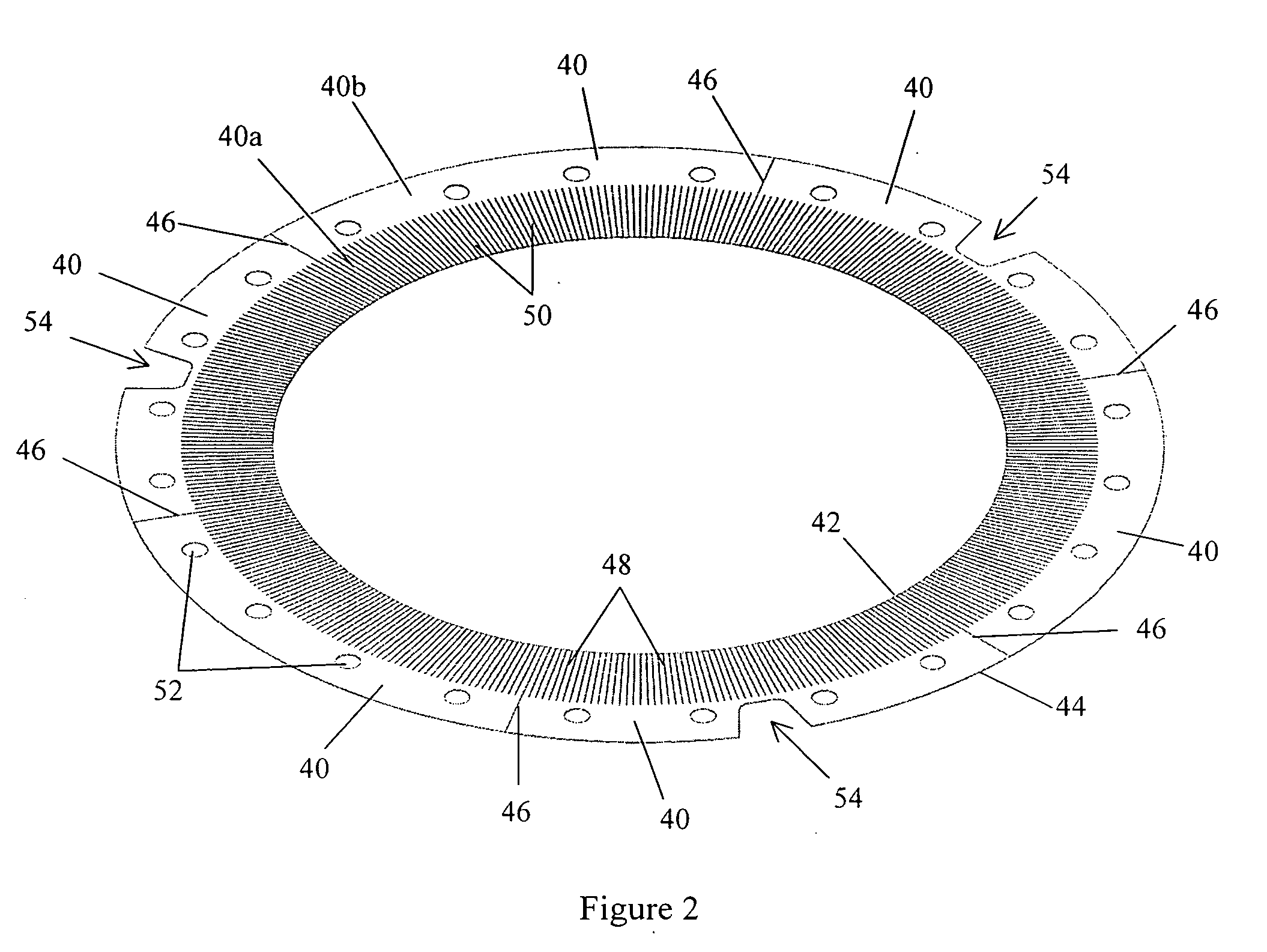Tubular electrical machines
a technology of electrical machines and tubular bodies, which is applied in the direction of electrical apparatus, dynamo-electric machines, sea energy generation, etc., can solve the problems of tubular electrical machines having the physical size, the need to control the eddy current in the core of the stator, and the control of the eddy curren
- Summary
- Abstract
- Description
- Claims
- Application Information
AI Technical Summary
Benefits of technology
Problems solved by technology
Method used
Image
Examples
Embodiment Construction
[0051] With reference to FIG. 1, a three-phase tubular electrical machine includes a stator 20 and a translator 22. The stator 20 has a cylindrical inner surface 24 that includes a series of annular slots 26 for receiving a series of coils 28 that together form a stator winding.
[0052] The translator 22 is formed in a number of individual sections that are mechanically attached together. The cylindrical outer surface of the translator 22 is covered by rows of permanent magnets 30. As shown most clearly in FIG. 6, the permanent magnets are arranged in such a way that the magnets in each row are skewed or shifted slightly with respect to each other in the axial direction. The offset between neighboring magnets reduces cogging forces. The magnets in each pair of axially adjacent rows have opposite polarity. For example, a row of magnets 30a might be N-pole and the axially adjacent rows of magnets 30b and 30c might be S-pole. Four steel strips 32 are provided on the outer surface of the...
PUM
| Property | Measurement | Unit |
|---|---|---|
| axial height | aaaaa | aaaaa |
| thick | aaaaa | aaaaa |
| axial height | aaaaa | aaaaa |
Abstract
Description
Claims
Application Information
 Login to View More
Login to View More - R&D
- Intellectual Property
- Life Sciences
- Materials
- Tech Scout
- Unparalleled Data Quality
- Higher Quality Content
- 60% Fewer Hallucinations
Browse by: Latest US Patents, China's latest patents, Technical Efficacy Thesaurus, Application Domain, Technology Topic, Popular Technical Reports.
© 2025 PatSnap. All rights reserved.Legal|Privacy policy|Modern Slavery Act Transparency Statement|Sitemap|About US| Contact US: help@patsnap.com



